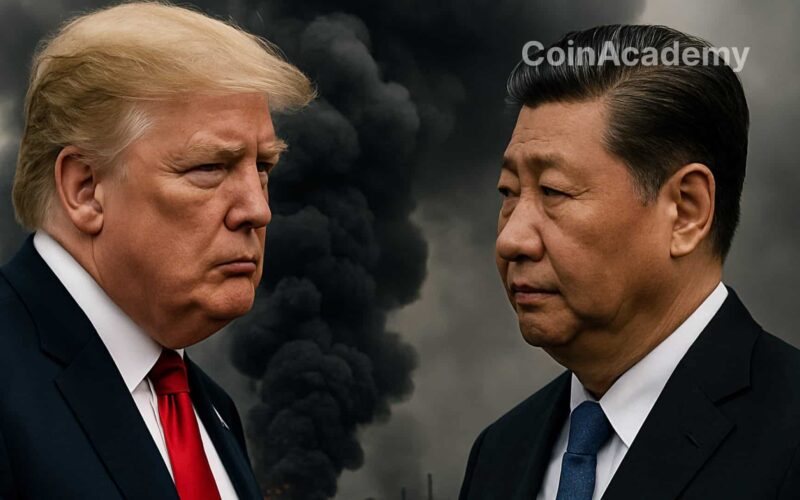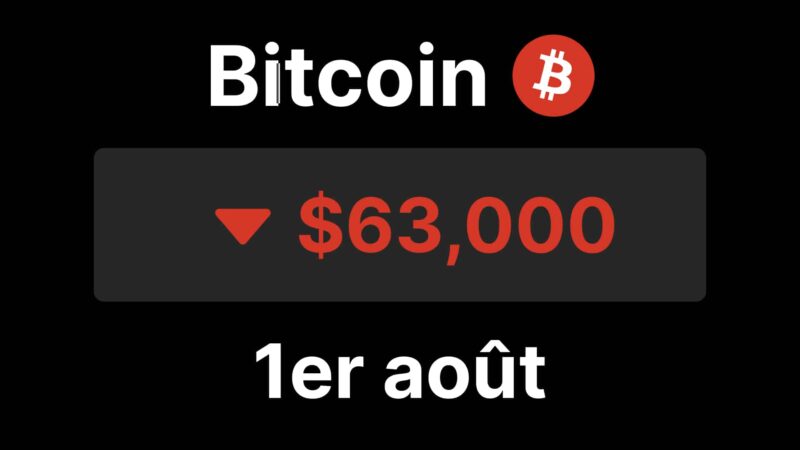L’accord surprise entre les États-Unis et la Chine prévoit une reprise des exportations chinoises de terres rares, en échange d’un possible assouplissement des restrictions américaines sur les semi-conducteurs.
Trump rompt avec la doctrine Biden en adoptant une approche plus transactionnelle : Pékin livre ses minerais, Washington relâche la pression technologique.
La trêve ne dure que 90 jours, mais les marchés ont réagi positivement, avec un impact potentiel sur la tech mondiale et les coûts de production liés au web3.
Trump et Xi: A Swift Truce Shaking Markets
C’est signé. Ou presque. After two days of intense negotiations in London, Donald Trump announced the conclusion of a major trade agreement between the United States and China. An unexpected deal designed to reignite the trade truce agreed upon in Geneva but already teetering. The focus: rare earths, those strategic metals that Beijing controls over 80% of and power industries worldwide, from defense to tech.
“OUR DEAL WITH CHINA IS DONE,” Trump declared on Truth Social. Translation: the White House is ready to unlock certain barriers if Beijing promptly fulfills its promises, especially regarding the export of rare earths to American industries.
A Strategic Shift on Semiconductors
A pivotal point of the agreement: Washington could relax restrictions on electronic chips. It’s a 180-degree turn from the Biden doctrine, which had implemented a “small yard, high fence” policy to block Chinese access to sensitive technologies.
Trump now seems to be playing a different hand: that of give-and-take. If China unlocks its exports of critical materials, the US could restore certain technological flows. A strong signal, especially in a context where global supply chains struggle to recover from post-Covid shocks.
A Carefully Staged Drama… and Persistent Tensions
The setting? Lancaster House, near Buckingham Palace. A royal residence turned into a diplomatic arena for two days, with on one side US Treasury Secretary Scott Bessent (tipped to replace Powell at the Fed) and Commerce Representative Jamieson Greer, and on the other side, Chinese Vice Premier He Lifeng.
But behind the forced smiles, tensions remain palpable. Beijing still reproaches Washington for its new restrictions on chip design software and the cancellation of visas for Chinese students. And the US accuses China of delaying promised export licenses.
A 90-Day Pause… under Scrutiny
The agreement is temporary: a mutual suspension of tariff increases for 90 days. A mere reprieve? Perhaps. But the markets reacted immediately: China’s CSI 300 gained +0.8% and the S&P 500 surged +0.3% at the opening.
Time will tell if this truce will hold. The last one was torpedoed within weeks.
A Direct Impact on Crypto and Tech Markets
Why does this agreement also interest crypto? Because (in addition to easing global tensions) rare earth supply chains directly impact semiconductors, therefore tech infrastructures… and thus web3. If China restarts exports, manufacturing costs can relax. And if tensions escalate, the entire digital ecosystem could creak.
The future depends on one factor: how far Trump and Xi Jinping are willing to play the card of strategic cooperation, on the cusp of an intense year.




